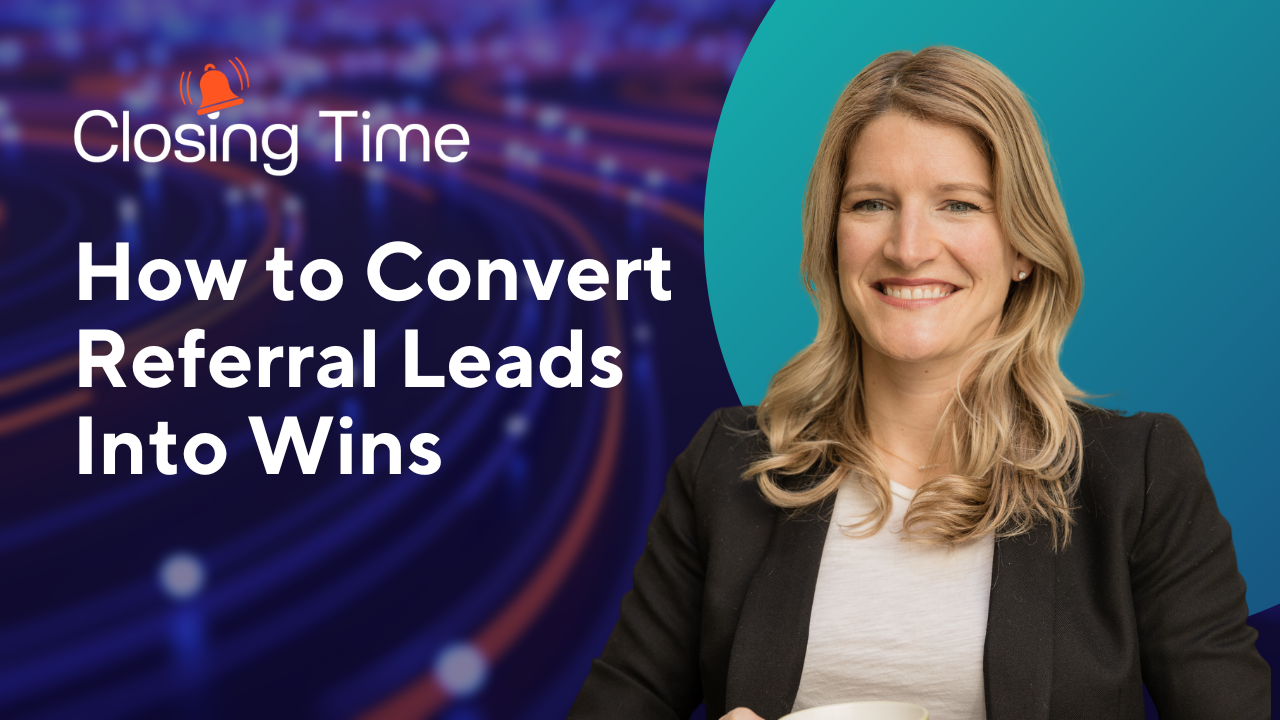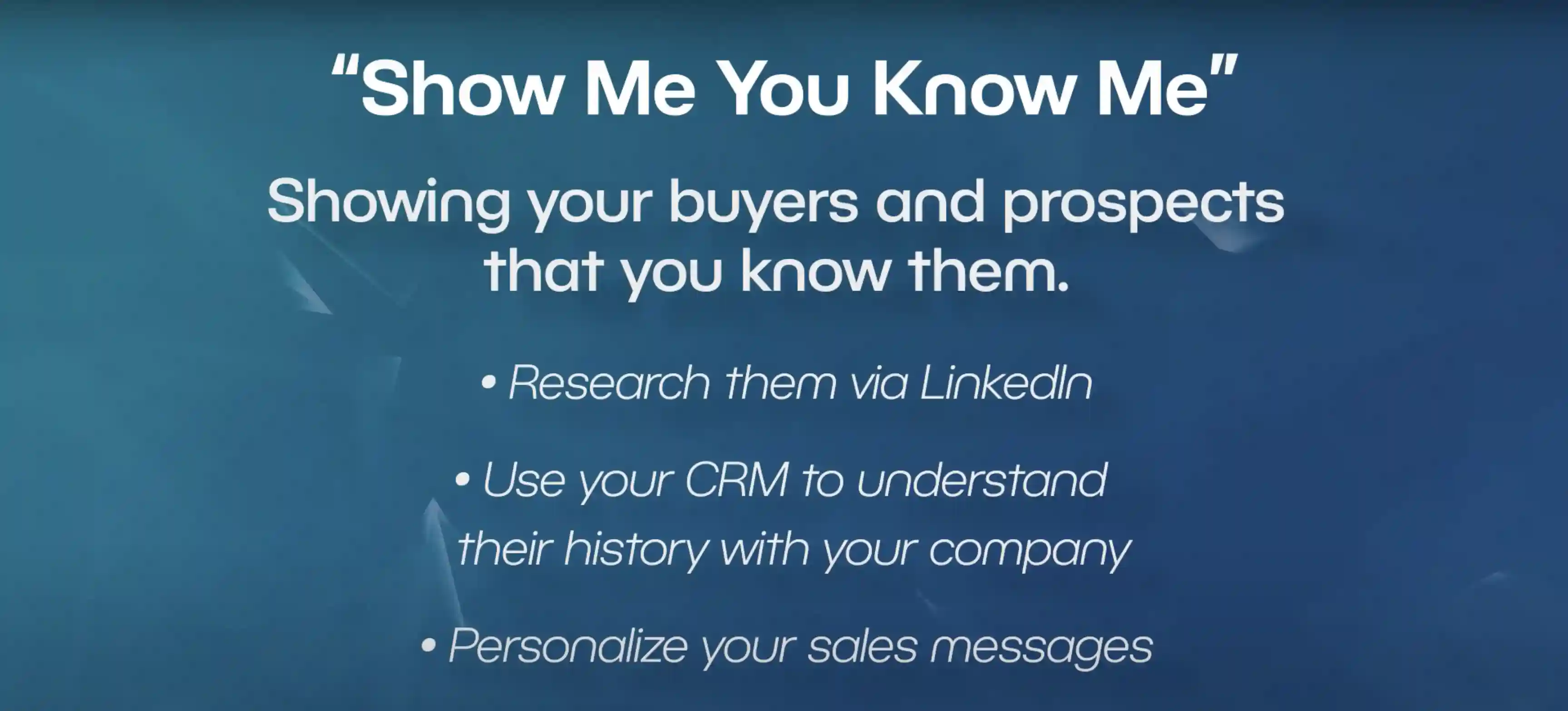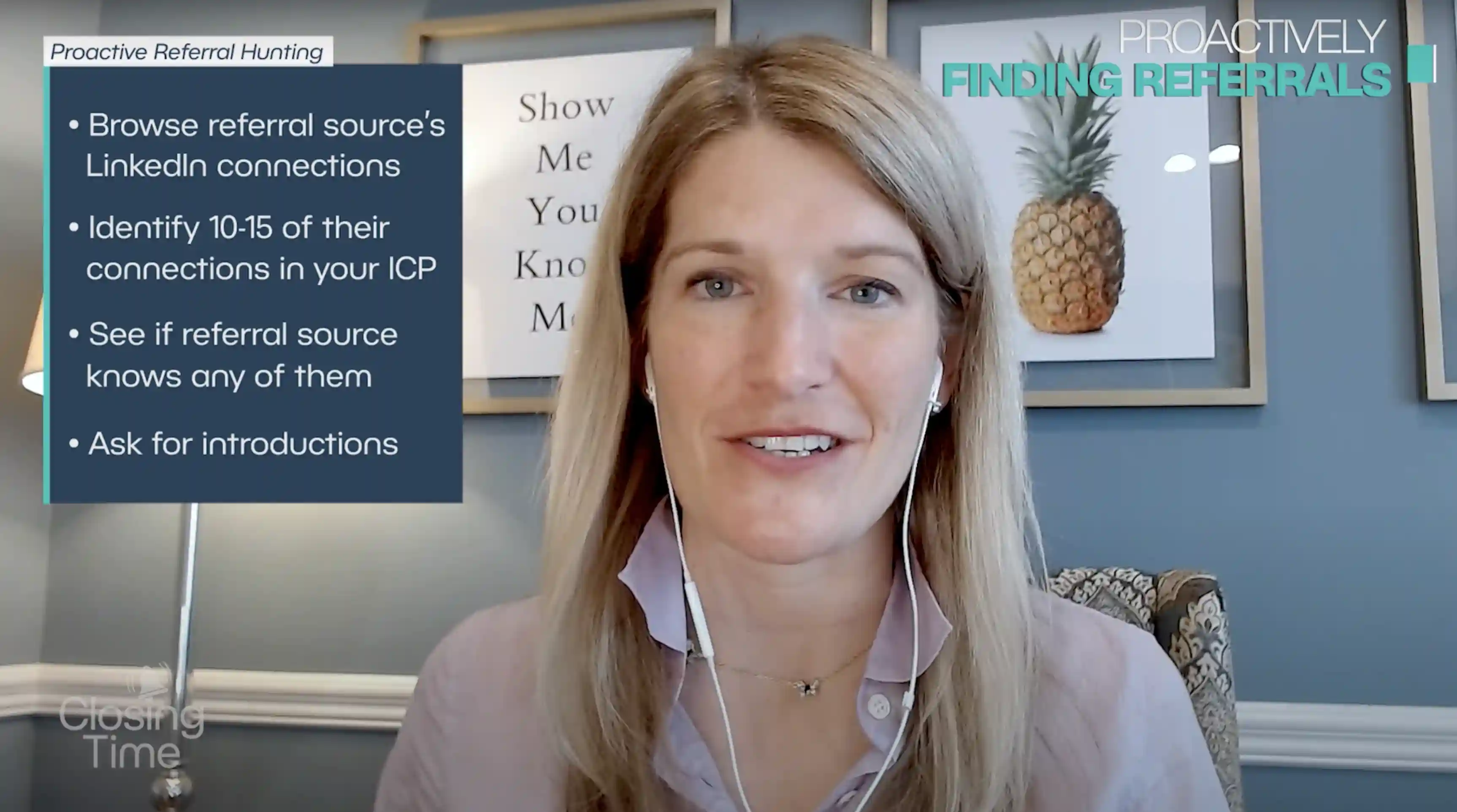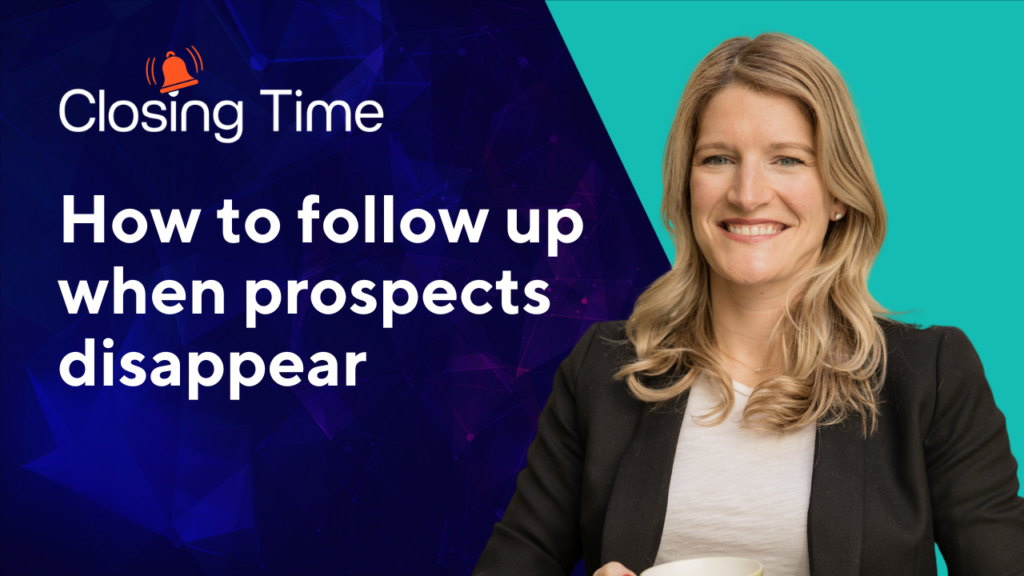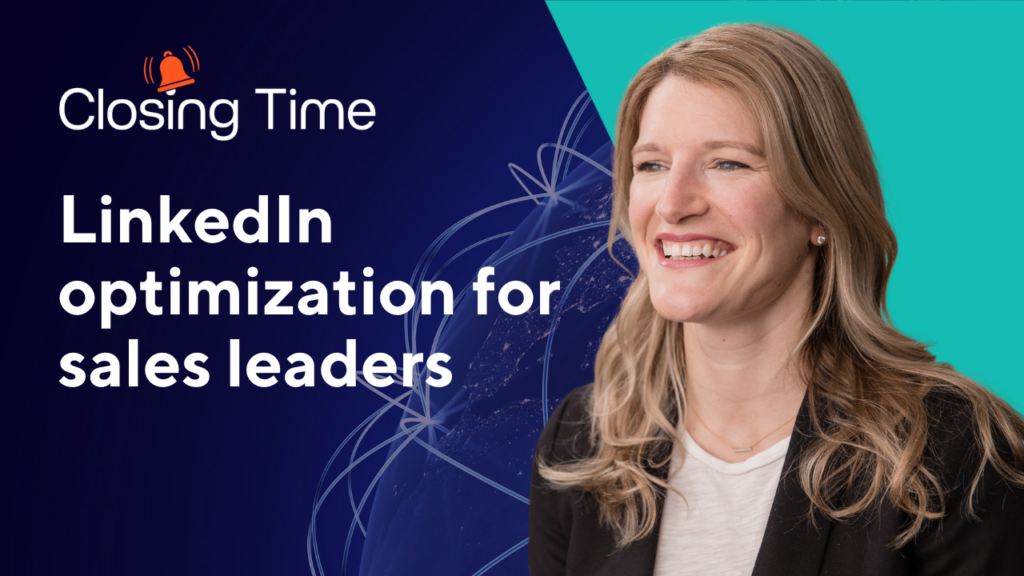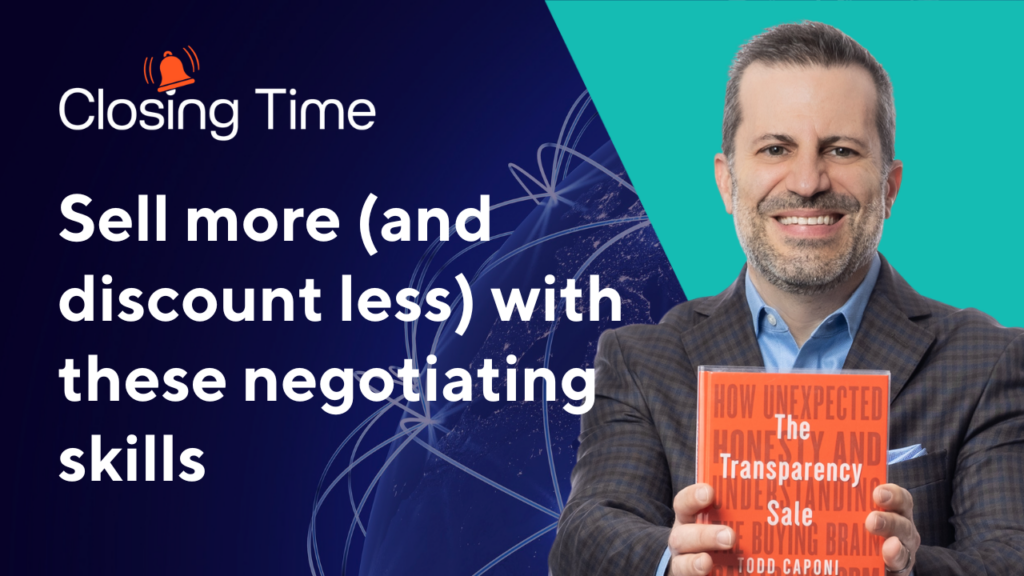Referrals are some of the best leads a sales rep can get.
Let’s talk through the key steps on turning those into wins
in this episode of Closing Time.
Hi everyone.
I’m Chip House, CMO at Insightly, and you’re watching Closing Time,
the show for go-to-market leaders.
Today I’m joined by Sam McKenna,. CEO of #samsales Consulting
an award winning sales leader, speaker and brand ambassador for LinkedIn.
Welcome to the show, Sam.
Thanks, Chip. So nice to be here.
So super excited to dig in to referrals.. I know that they’re
super powerful for marketers and they are for salespeople as well.
Tell us more about
your perspective on referrals and how salespeople make the most of them.
I think this is such an amazing opportunity for salespeople
to hit their quota, but sometimes
we don’t think about how to do it the right way. So,
Proactive referrals versus reactive referrals.
And then even if we do get a referral what do we do next?
And think about referrals,
like there’s so many different places we can go with one.
So this might be someone proactively sending one to us, right
where we’re waiting for one to come in.
It can also be us sending an outbound email
and getting someone who says,. Hey, I’m not the right person,
but here’s who is. There’s so many different ways to look at referrals,
how we get them, and then what we do with them once they actually show up.
So what would you say is the first step
that a sales rep needs to think about once they’ve been passed a referral lead?
Yeah, so I think, number one, getting a referral is to me,
it’s like a lead on a silver platter.
You have been handed a piece of gold.
We want to make sure
that we treat this lead with utmost importance and utmost care.
And what we really want to think about is this is our first impression to teach
The person that referred us that lead, how we treat leads, right?
It’s our opportunity to either show up beautifully or to say, you know,
I’m not really worthy of future referrals, so don’t send them to me in the future.
So you want to be really smart.
The first thing I would say is think about responding same day.
Urgency really matters.
So, Chip, let’s say you stuck your neck out for me and you referred me a lead.
It’s really important that I respond the same day.
I show the urgency, I show excitement for that lead.
And I make sure that that timeliness address is there.
Because I’ve seen reps wait two days, three days, I’ve seen reps wait 11 days,
and that drives me bananas.. So I know, right?
Can you imagine?
11 is far too many.
Yeah, by like a week.
11 minutes is too long for me.
Yeah.
But move fast for sure.
And then I think one thing to, you know, while we are being urgent,
you know at Samsales, we talk about the whole idea of show me,
you know, me, it’s probably the phrase that I say most often in a day.
So while I want to be quick to respond to that lead, I also want to take
just a brief second and I want to do some research on that person.
So let’s say, Chip, somebody referred me to you and you and I were going to connect.
I’m going to go to your LinkedIn profile.
Who else do you know?. Where else have you worked?
Where do you live?
What commonalities can I find between us? Right.
Because here’s the thing.
Let’s say you refer to me through somebody that you trust, and then let’s say
I respond and say, Bill, thanks so much for the introduction to Chip.
Chip, by the way, I see you used to work here, one of our existing clients.
I see you also know these three people who I know really well,
also our existing clients or my former boss, et cetera.
Just by taking 2 seconds to do that, show me, you know me.
Not only am I going
to stand out in a positive way, but I’ve just up to my credibility fourfold
by finding some commonalities and people that we know
that you can even backchannel and get additional referrals from.
That’s great stuff.. So you hit on speed right?
So ensuring you follow up quickly and then just doing your research,
you know, so you’re making sort of a true, informed personal touch.
So what is there a third thing?
Yeah, I think actually just being cognizant of how we stand out
to be different and this applies to every part of our sales process.
But, you know, I think we’re so quick to expect the reps respond to us with, Bill,
thanks for introducing me to Chip.
Here’s my calendar link, schedule some time with me.
That’s kind of what we expect.
So the third thing to just think about is how you can be different
in this communication by being urgent and by doing your homework.
It’s huge.
Now, we’ll talk a little bit later about how to get this precious leads.
How do we uncover these leads?
But maybe we talk about the what not to dos first.
Yeah, let’s do that.
What comes to mind first?
Is it just
throwing a calendar link at the person in some sort of uninformed message?
So here’s a thing.
I think there is a time and a place for the calendar link.
Right. I’m a big fan of it.
However, I think when we are doing, we’re looking at referred leads
or even when we’re thinking about work
that’s outbound, it’s presumptuous to us, and it also feels a little lazy.
And I think when you talk to most reps, they’re like,
Oh my gosh, this is so convenient though,. I’m just going to send them a link.
They can look at my availability.. This is great.
Here’s the thing.
So let’s talk about urgency first.. If I’m sending you a link, I’m basically
putting the work on you to find a slot on my calendar
and you slot in around all of the other stuff that I have.
Well, that doesn’t matter.
What really matters is how quickly we can meet.
We know the old adage of time kills deals, right?
So let’s make sure we meet this week instead of next week.
I in fact know a CRO who always proactively books out two weeks later
if that sales rep sends a calendar link
just to spite them, which is hilarious to me.
But just think about this, right?
We don’t want that person to schedule
around our things, our internal meetings, our one on ones, our town halls.
We want to meet as quickly as they can, as we can meet with them.
The other thing
that you want to think about here is that we’re putting the onus on the buyer
to then schedule time with us.
So they still have to do work.
They have to click on our link.
They have to look at their calendar, right that back and forth.
And then they’ve got to find some time that works.
And at the end of the day, all that matters is when they’re available.
So why not just say, tell me what times work for you
and I’ll send a calendar invite along accordingly.
Makes perfect sense.
You know, it seems super human approach, you know, to it.
So how about the first meeting itself, Sam?
So once you actually get on the phone with this person, obviously you want to be
highly gracious and talk about the person who referred you
and maybe how you got connected, what other tips do you have?
I’m all about show me, you know, me as we talked about.
So do your research.
What can we connect with on that person?
Again, where have they worked?
Where do they live?. How long have they been at their company?
Who else might they know?
I want to have a little bit crib sheet of that information
and guess what, in our virtual environments,. I can have it right here in front of me.
And you would have no idea which is fantastic, right?
So I have all that work done.
I would also just make sure you make that human connection.
So, Chip,
if you and I were going to meet, I would say thank you so much for making time
I’m so glad Bill introduced us.
How do you guys know each other?. How do you go back?
I’m not talking about myself first.
I’m asking you how you guys know each other.
I’m giving myself a little pause.
I’m checking your temperature.
I’m allowing you to talk. Right.
And then I’ll share my own story and probably bring up a little show me,
you know me.
the other thing to think about is look at that person’s background, right?
So what’s going on there?. We could look at your background, Chip.
People could look at mine and say, what’s up with the pineapple?
Which I get a lot right?
But let’s pick up on those things in the background
as a way to build rapport, start conversation,
make some small talk and just kick it off in a way that’s personal and human.
Again, instead of just say, Chip, thanks for making time.
How can I help you? Which is the worst.
That makes a ton of sense.
And so, you know,. I know that referrals, you know,
tend to be great closing leads, right, for a sales rep.
And so they can come from a friend,
a close friend, just a network contact, a customer, a partner.
And obviously you have to sort of right size the thank you right
to me whatever their relationship is with you.
But do you have any thoughts on, you know, what’s worked best for you
for following up with the person who referred that piece of business?
I have such a specific process when we get inbound referrals. So again,
somebody refers me to you
Chip, let’s say it’s Bill,. I will reply all first and foremost.
So just make sure again in that kind of what to do.
We want to reply all
because I want to give Bill
the reassurance that I’ve actually responded to that email
we see sometimes where reps will just respond to the person that’s been referred
and then leave the referral source off, which leaves us in the dark, right?
So we want to make sure we reply all and then of course move that person to BCC.
So they’re not subject to all that back and forth. Right?
Then what I think about is a separate email to Bill.
Thank you so much for this referral.
Couldn’t appreciate it more.
These are gold to us.
Make sure I take great care of Chip and I’ll keep you posted on how it goes.
I also like to send a handwritten thank you note, that’s just me and
that’s one step above and beyond but. I like to say these really, really matter.
So since you went to the extra effort,. I’m going to go to the extra effort.
After we have our first call,
I also like to let the referral source know how it went.
Made a great first call.
You identified perfectly how we could help them.
This is how it went, et cetera.
And then when the deal closes or
if it sometimes doesn’t close I also like to let the referral source know.
It’s just a great way to keep them in the loop, especially
if, Chip, you go back to Bill and say, here’s what happened.
At least Bill can say, Yep, I’m aware. Sam told me, filled me in
on all the good stuff,
or where it didn’t go, you know the right way, and you guys went another direction
and then at least that person’s well informed.
Plus again, this just shows your character and your style and proves to that person
that you’re worthy of future referrals and that you take these really seriously.
I love that, Sam. I love that
you have a process number one, and, you know, love the handwritten personal note.
In fact,. I was just commenting to a colleague
about the handwritten note. I got from you, so much appreciated.
It stands apart.
You know, it really sets you apart.
And I mean, I don’t know, in this day and age, it just feels super hyper personalized,
and I really enjoy it.
So seems like a best practice to me for sure.
It’s different and nice, nice way to set yourself apart.
Yeah, no question.
So any final thoughts Sam?
Yeah.
One more thing I would just say is think about how you can proactively go get referrals.
And what I mean by this is that if you have someone
who comes to you and says, this was such a great experience
working with you, if we can ever be a referral source to you
or if we can ever be of help, let us know.. What most people think in that regard is
thank you so much. Keep us in mind.
Or can you think of anybody off the top of your head that you could refer us to?
And you might say, not right now, but I’ll keep you posted
and then that rep gets what’s called happy ears, right?
They get excited.. You’re going to keep me in mind.
That’s great.
But what we really want to do when we have an opportunity like this,
or even if somebody doesn’t proactively offer it but we know they love
our services, is to simply say, Chip, we’ve had such a long term relationship.
I wonder
if I could do something really quick.. Could I pop into your LinkedIn network?
Could I take a look at who you’re connected to?
And would you mind if I send you a few names of people that we’d love
introductions to and see if on the off chance you know them really well?
So I’m taking that proactive control, right?
And I’m saying, instead of you
having to think about who to refer us to, let me do that work for you.
And frankly,
what I get to do then is I get to control who I’m asking for introductions to.
So even better for me, super selfishly driven, I can now look
for the people you know, and then send you those names.
And the thing that I love about this too, is I get a little cheeky.
So I would send you, Chip, 10, 12, maybe 15 names and I would say
I’m just hedging my bets to make it as easy as possible for you.
I know we’re all connected to people on LinkedIn
that we absolutely no idea who they are and how we’re connected to them.
So I thought I would just send you a few names, a dozen plus and see,
do you even know one or two of these people?
What I’m really hoping is that you say, yeah, I know seven or eight of these people
and do you want me to introduce you to all of them?
And then I will say, Yes, please.
But just that proactive
step is huge because otherwise. I’m squandering the opportunity.
I’m waiting.
I’m reactively just sitting here until a lead comes in versus saying,
Thanks for being a referral source for you.
Let me take a look at your network and send you a few names back.
I think that’s so cool, at multiple steps in the journey.
You’ve kind of built it into your process to just do the work
on behalf of the buyer. Right?
And that makes a huge difference.
And I think it’s really unique. Exactly.
And it is such an easy way to come up with referrals and leads and meetings, right?
Because you think of the power of a warm introduction. So not only am I
taking your generous offer to refer us, but now I’m going to look at those names.
Now I’m getting you to introduce us.
And not only am I speeding up that trust and credibility
that I will have with that person that you introduce us to.
But in addition to that,. I’m speeding up the timing of the meeting.
So instead of me reaching out to them for the next eight weeks
and hoping something resonates and they respond, I’m probably
getting a meeting in a week and a half or two weeks at the latest.
All right, Sam, thanks so much.
It was great for having you on today.
Thanks for joining us.
Thank you so much for having me, Chip.
Great to be here.
Of course.
And thanks to all of you at home for joining us today for this episode
of Closing Time, the show for sales and marketing leaders.
Make sure you subscribe, like, and tick the bell and we’ll see you next time.

